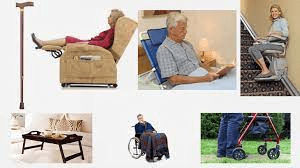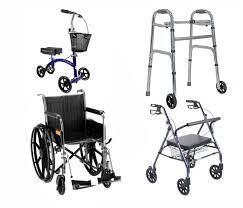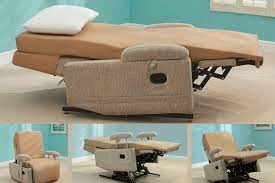Caring for elderly loved ones at home requires careful consideration of their safety, comfort, and well-being. One of the key aspects of providing effective elderly care is having the right equipment in place. From mobility aids to assistive devices, the right tools can greatly enhance the quality of life for seniors and provide peace of mind for family members and caregivers. In this article, we will explore the essential equipment for elderly care at home, covering a wide range of needs and considerations.
1. Introduction
Creating a safe and supportive environment for elderly individuals at home involves assessing their unique needs and providing appropriate equipment. Properly chosen and well-maintained equipment can empower seniors to maintain their independence and enjoy a higher quality of life.
2. Mobility Aids
Mobility aids play a crucial role in helping seniors move around their home comfortably and safely. These living aids include:
- Walking Aids: Canes, walkers, and rollators provide stability and support while walking.
- Wheelchairs: Manual or electric wheelchairs allow individuals with limited mobility to move around independently.
- Mobility Scooters: Electric scooters are ideal for outdoor use and longer distances.
3. Bathroom Safety Equipment
Bathrooms can be high-risk areas for seniors. The following equipment enhances bathroom safety for older people:
- Grab Bars: Installed near toilets and in the shower, grab bars provide support when standing or moving.
- Shower Seats: Foldable or stationary shower seats allow seniors to shower while seated.
- Raised Toilet Seats: Raised seats make it easier for seniors to use the toilet.
4. Assistive Devices for Daily Living
Assistive devices can aid a person in performing daily activities more easily:
- Reaching Aids: Tools with extended reach help seniors access items without straining.
- Adaptive Utensils: Designed for individuals with limited dexterity, these aids simplify eating.
- Dressing Aids: Devices like button hooks and zipper pulls assist with getting dressed.
5. Medical Monitoring Equipment
Monitoring equipment helps caregivers keep track of seniors’ health:
- Medical Alert Systems: Pendant or wrist-worn devices allow seniors to call for help in emergencies.
- Blood Pressure Monitors: Regular monitoring of blood pressure aids in managing health.
6. Home Accessibility Modifications
Making the home more disability accessible includes:
- Ramps: Ramps provide easy access for wheelchairs and mobility devices.
- Widened Doorways: Wider doorways accommodate wheelchairs and walkers.
7. Comfort and Convenience Aids
These aids enhance seniors’ comfort with mobility equipment and convenience:
- Adjustable Beds: Beds with adjustable positions provide comfort while sleeping or resting.
- Lift Chairs: Lift chairs assist seniors in standing up from a seated position.
8. Emotional Support and Engagement
Keeping children and seniors engaged and emotionally fulfilled is important:
- Communication Devices: Tablets or smartphones help seniors stay connected with loved ones.
- Recreational Equipment: Books, puzzles, and hobby materials provide mental stimulation.
9. Safety Measures
Safety measures include:
- Fall Alarms: Alarms detect falls and alert caregivers or emergency services.
- Night Lights: Night lights prevent tripping during nighttime movement.
10. Financial Considerations
Budget-friendly options and financial assistance programs can help manage costs:
- Government Programs: Investigate government programs that provide financial aid for equipment.
- Rental Options: Some equipment can be rented instead of purchased.
11. Customizing Care
Each individual person’s needs are unique, so it’s important to tailor the equipment to their requirements.
Mobility Equipment
Mobility equipment plays a vital role in improving the quality of life for individuals with mobility challenges. Whether due to age, injury, or a medical condition, limited mobility can impact a person’s ability to perform daily activities and participate in social interactions. The use of appropriate mobility aids and devices by disabled people can restore independence, boost confidence, and promote an active lifestyle.
Conclusion
Selecting the right service and equipment for elderly care at home is a thoughtful and crucial process. By considering the specific needs of seniors and investing in appropriate aids and devices, caregivers can create a safe, comfortable, and supportive environment that promotes their well-being and maintains their dignity.


